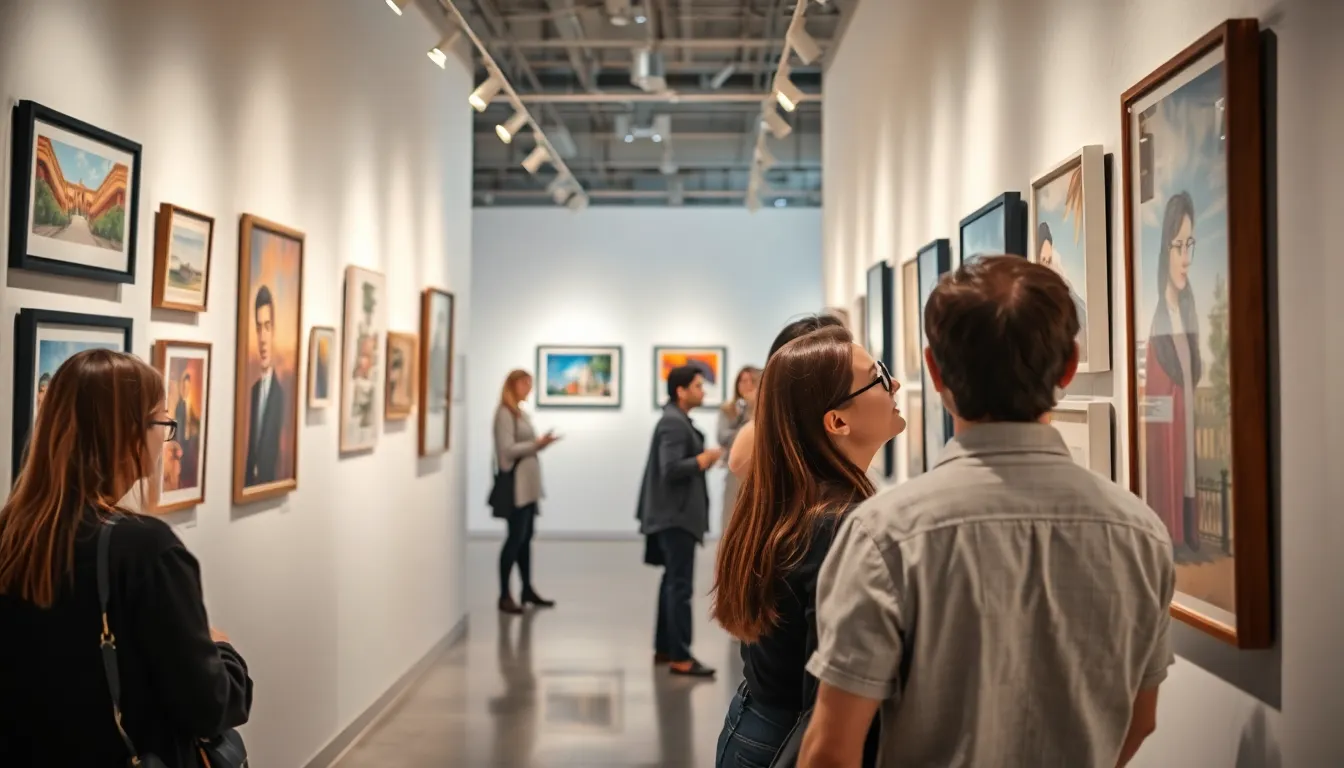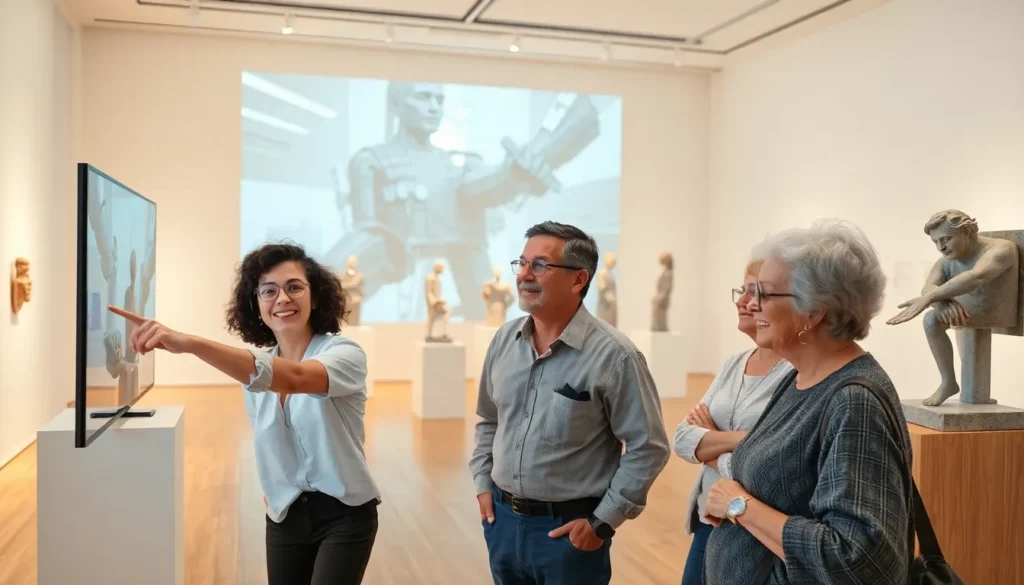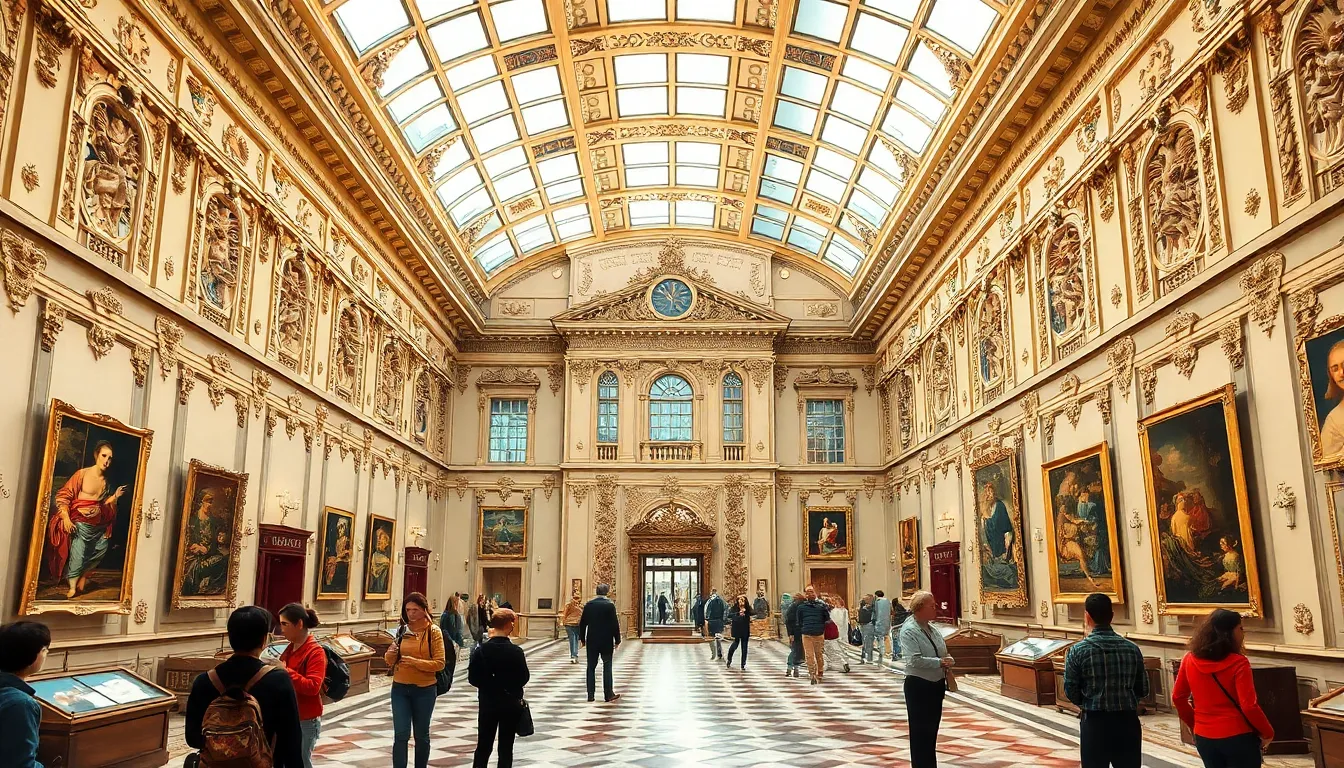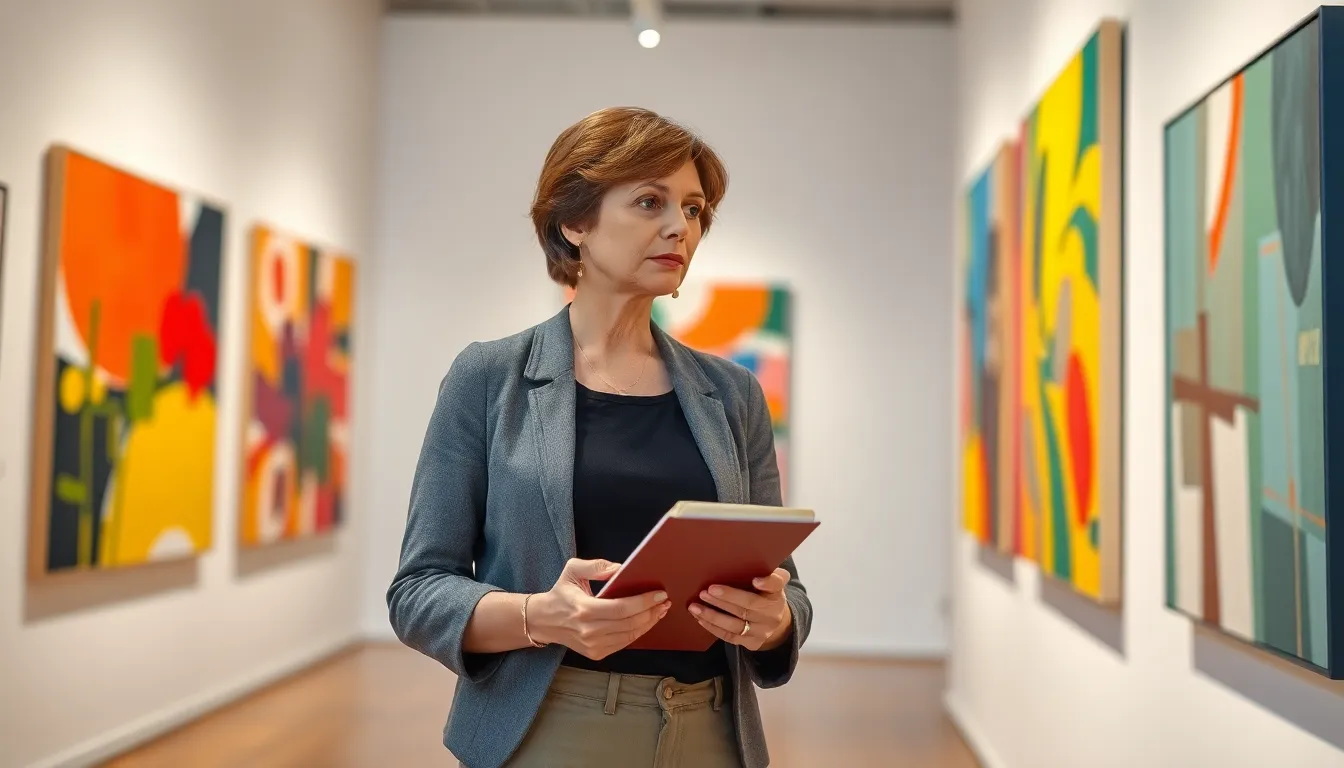Table of Contents
ToggleGallery installations are where art meets experience, transforming spaces into immersive worlds that captivate and inspire. Imagine stepping into a room filled with vibrant colors and thought-provoking concepts that challenge your perception of reality. These installations invite viewers to interact, engage, and sometimes even rethink their understanding of art.
From the quirky to the profound, gallery installations can make you laugh, ponder, or even question your life choices—like why you thought wearing white to an art show was a good idea. They break the mold of traditional galleries, offering a feast for the senses and a chance to connect with art in ways you never thought possible. Whether you’re a seasoned art lover or a curious newbie, there’s always something to discover in the world of gallery installations.
Overview of Gallery Installations
Gallery installations redefine traditional art spaces, creating environments where art transcends mere observation. They challenge viewers to engage actively with the artwork, fostering a more profound connection. By integrating diverse mediums like sculpture, video, and sound, these installations invite exploration that captivates audiences.
Many installations aim to elicit emotional responses, ranging from joy to introspection. Involving interactive elements can heighten the experience, letting visitors influence and interact with the art. Such dynamics encourage dialogue between the observer and the artwork, enhancing engagement levels significantly.
The flexibility of gallery installations adapts to various themes and concepts. They can convey narratives that stimulate thought and prompt critical conversations. Artists often utilize innovative techniques to incorporate technology, pushing boundaries within the art realm.
Furthermore, successful installations often reflect current societal issues or explore personal experiences, making them relevant and relatable. Organizers usually curate these works to create a cohesive flow throughout the space, guiding visitors on a unique journey.
Ultimately, gallery installations serve as vital platforms for both established and emerging artists. They expand the definition of art while drawing in a diverse audience. The evolving nature of these installations continues to reshape the art landscape, offering fresh perspectives and enriching experiences for everyone involved.
Key Elements of Effective Gallery Installations

Effective gallery installations rely on several key elements that enhance viewer engagement and experience. Attention to these components can significantly impact the overall effect of the exhibition.
Spatial Design
Spatial design plays a crucial role in gallery installations. It involves arranging artworks in a manner that encourages exploration and interaction. Organizers create clear pathways that guide visitors through the space, allowing them to take in each piece thoughtfully. The use of various layouts adds depth to the experience, inviting curiosity and contemplation. Open areas can evoke a sense of freedom, while more intimate settings foster personal connections with the art. The strategic placement of artworks enhances visibility and accessibility, creating a fluent flow throughout the installation.
Lighting Techniques
Lighting techniques define the mood and atmosphere of installations. Proper lighting highlights specific pieces while creating a pleasing ambiance. Many artists utilize natural light to emphasize textures and colors, enhancing the viewing experience. Adjustable fixtures allow for varied brightness levels, accommodating different moods and themes. Low lighting can evoke mystery, while bright spots draw immediate attention to significant elements. Effective use of shadows can also add depth and dimension, enriching the visitor’s overall perception of the installation. These thoughtful lighting choices engage viewers, prompting them to look closely and reflect on the artwork.
Types of Gallery Installations
Gallery installations come in various forms, each offering unique experiences. Understanding these types enhances appreciation for their artistic significance.
Temporary vs. Permanent Installations
Temporary installations exist for limited durations, often reflecting current events or seasonal themes. They draw attention by creating urgency and excitement. Artists frequently use them to experiment with new concepts or materials. In contrast, permanent installations remain on-site, providing a lasting impact. They contribute to a gallery’s identity and offer ongoing engagement. Destinations often feature permanent pieces that invite repeated visits, revealing new details over time. Both types play essential roles in enriching the art landscape, each serving specific curatorial goals.
Interactive Installations
Interactive installations engage viewers through participation, breaking the barrier between art and audience. Many projects include elements that invite touch, movement, or exploration, creating immersive experiences. Artists design these installations to provoke thought and dialogue, encouraging deeper connections with the artwork. In this setup, visitors often become co-creators, influencing the installation’s narrative. Examples include installations that utilize technology to respond to movements or voices. Such artworks challenge traditional gallery norms and open up new possibilities for artistic expression and viewer involvement.
The Role of Technology in Gallery Installations
Technology transforms gallery installations into dynamic experiences. Innovations like augmented reality (AR) and virtual reality (VR) enhance viewer interaction, allowing them to engage with artworks beyond traditional viewing methods. Digital projections and interactive screens create immersive environments that draw audiences in and foster deeper connections.
Artists utilize sound design to evoke emotions, enhancing storytelling within installations. Using multimedia elements encourages participation, pushing the boundaries of how art is perceived and experienced. Smart tools allow galleries to customize exhibits, maximizing visitor engagement through personalized experiences.
Lighting technology also plays a critical role. Advanced lighting systems may highlight specific pieces, creating dramatic effects that captivate onlookers. By manipulating light, installations can change moods, supporting the themes expressed throughout the gallery space.
Audience feedback can be integrated through technology, allowing for real-time interaction. Collecting data on viewer behavior helps refine future installations, ensuring relevance and resonance with diverse audiences. Such insights foster continuous improvement in art exhibition strategies.
The integration of technology reinforces accessibility in gallery installations, broadening participation for those unable to visit physical spaces. Online platforms and virtual tours grant a wider audience access to artistic expressions and cultural narratives. These advances reflect a shift toward inclusivity in the art world.
Various art forms merge within technological installations, expanding creative possibilities. Artists challenge conventional boundaries, exploring new mediums and innovative methods to connect with viewers. As technology continues to evolve, so too does the potential for impactful gallery installations, inviting scrutiny and admiration in equal measure.
Gallery installations represent a transformative force in the art world. By merging various mediums and interactive elements they create immersive environments that resonate with viewers. This innovative approach not only redefines how art is experienced but also fosters meaningful connections between artists and audiences.
As technology continues to advance the possibilities for gallery installations expand. The integration of digital tools enhances engagement and accessibility making art more inclusive than ever. Ultimately these installations not only challenge traditional norms but also invite ongoing dialogue about the role of art in society. They stand as a testament to the evolving landscape of creativity and expression.



